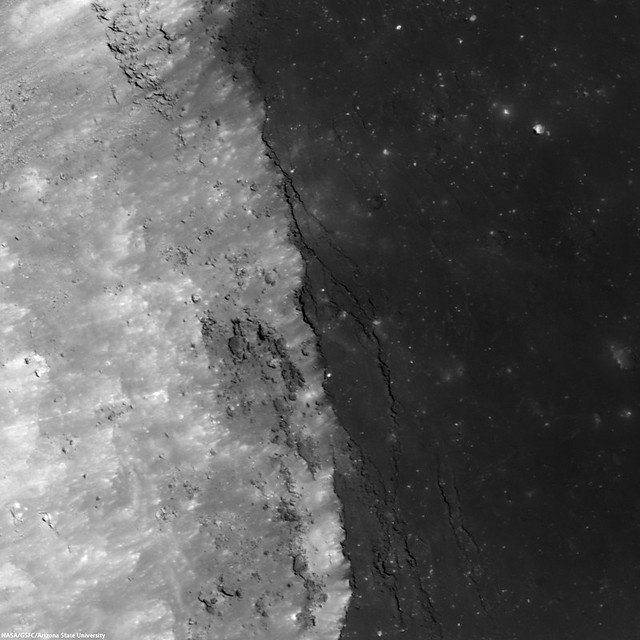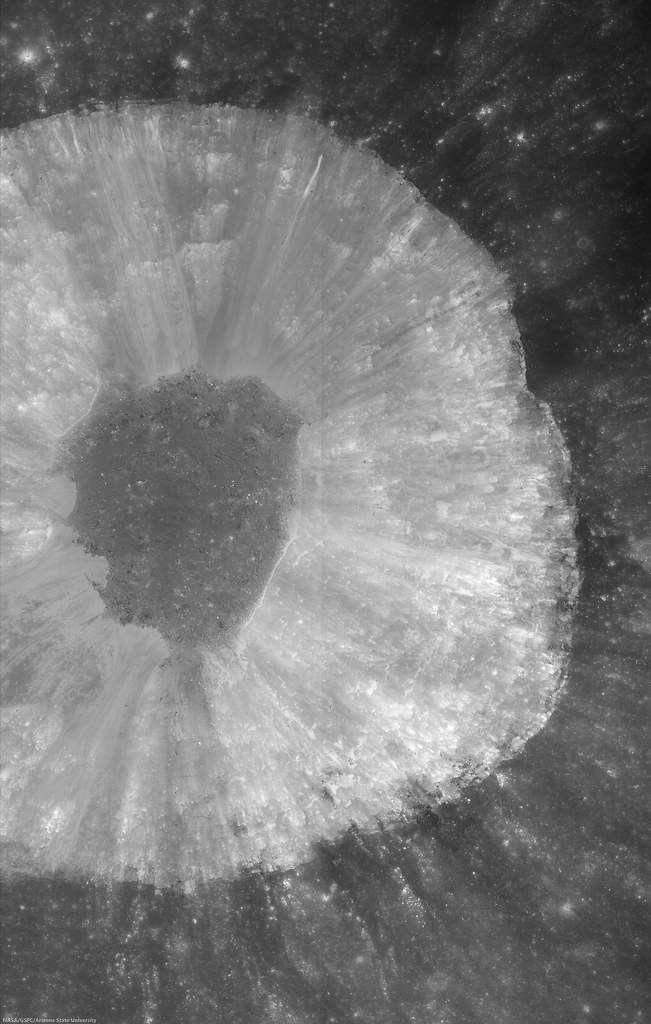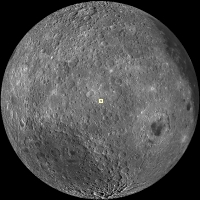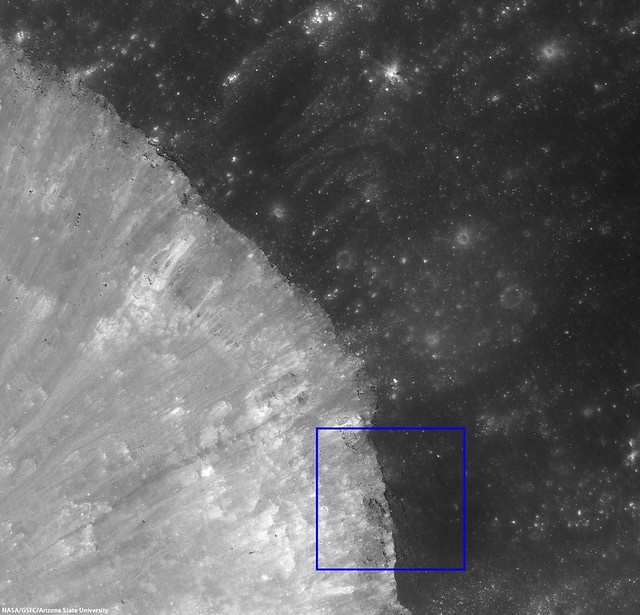 |
| Eastern rim of an unnamed young crater. LROC NAC M156102528L; image center 4.072°S, 227.294°E; image width is 590 m; incidence angle is 7.2°, illuminated from right side [NASA/GSFC/Arizona State University]. |
Hiroyuki Sato
LROC News System
Today's Featured Image highlights the eastern rim of an unnamed young crater (about 6.8 km in diameter), observed in the farside highlands, 218 km southwest from the center of Hertzsprung crater (587 km in diameter). The higher reflectance area (left side of image) is the crater wall inside the crater cavity, and the low reflectance area (right side of image) is the outer surface of the crater, covered by a layer of dark impact melt deposits (see next NAC context view). The low incidence angle (Sun overhead, 7.2° from vertical) enhances the strong reflectance contrast between the fresh anorthosite-rich outcrops on the crater wall and fresh impact melt rocks on the crater exterior. During the cratering process, impact melt was ejected from the crater and placed on the crater exterior, forming a thin layer, or veneer, which solidified into solid rock as it cooled.
As the crater wall collapses with time, the exterior melt veneer is fractured and collapses into the crater, as seen in the center of the opening image. From the very narrow shadows (2~3 pixels) along the boundaries between the melt layer and the crater wall, the thickness of the melt sheet can be roughly estimated to be 9 to 14 m. The thickness of the impact melt deposits near the crater rim crest is controlled by the viscosity of the melt and local slopes. In addition, melt splashing out of the crater with a high ejection velocity may form thinner melt veneer deposits. High resolution NAC images allow us to examine the changes in melt thickness as impact melt flowed away from the crater, telling part of the story of the spectacular moment of this impact cratering event.
Explore the fresh impact melt sheet around this unnamed young crater in full NAC frame yourself, HERE.
Related Posts:
Fractured Melt Rock
Hole on A Melt Sheet
Dark Impact Melt Sheet
Splash and flow
LROC News System
Today's Featured Image highlights the eastern rim of an unnamed young crater (about 6.8 km in diameter), observed in the farside highlands, 218 km southwest from the center of Hertzsprung crater (587 km in diameter). The higher reflectance area (left side of image) is the crater wall inside the crater cavity, and the low reflectance area (right side of image) is the outer surface of the crater, covered by a layer of dark impact melt deposits (see next NAC context view). The low incidence angle (Sun overhead, 7.2° from vertical) enhances the strong reflectance contrast between the fresh anorthosite-rich outcrops on the crater wall and fresh impact melt rocks on the crater exterior. During the cratering process, impact melt was ejected from the crater and placed on the crater exterior, forming a thin layer, or veneer, which solidified into solid rock as it cooled.
 |
| Full 5.4 km-wide field of view from full-width mosaic of the left and right frames from LROC Narrow Angle Camera (NAC) observation M156102528RL, LRO orbit 8138, March 30, 2011; angle of incidence 7.23° at 59 cm per pixel resolution from 56.8 km [NASA/GSFC/Arizona State University]. |
As the crater wall collapses with time, the exterior melt veneer is fractured and collapses into the crater, as seen in the center of the opening image. From the very narrow shadows (2~3 pixels) along the boundaries between the melt layer and the crater wall, the thickness of the melt sheet can be roughly estimated to be 9 to 14 m. The thickness of the impact melt deposits near the crater rim crest is controlled by the viscosity of the melt and local slopes. In addition, melt splashing out of the crater with a high ejection velocity may form thinner melt veneer deposits. High resolution NAC images allow us to examine the changes in melt thickness as impact melt flowed away from the crater, telling part of the story of the spectacular moment of this impact cratering event.
 |
| Synoptic view of the unnamed young crater and surrounding areas in LROC WAC monochrome mosaic (100 meters/pixel), centered on 2.07°S, 113.88°W. The NAC footprint (blue box) and the location of opening image (yellow arrow) are illustrated [NASA/GSFC/Arizona State University]. |
Related Posts:
Fractured Melt Rock
Hole on A Melt Sheet
Dark Impact Melt Sheet
Splash and flow




No comments:
Post a Comment